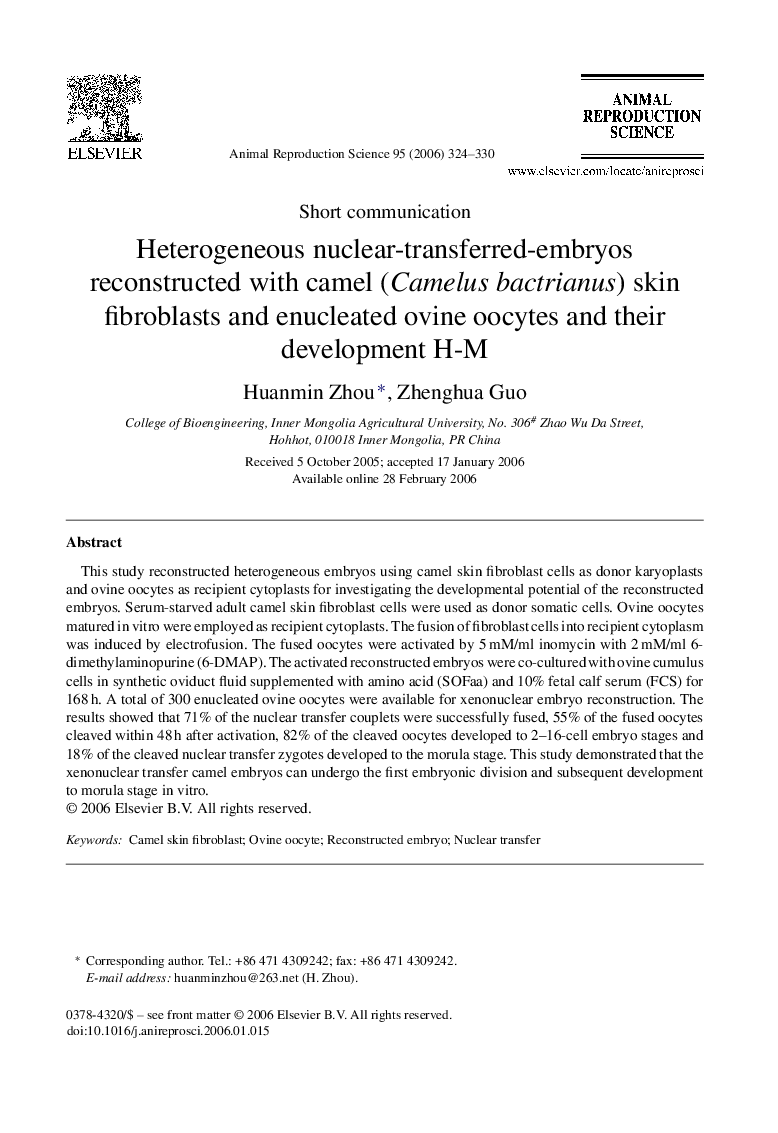| Article ID | Journal | Published Year | Pages | File Type |
|---|---|---|---|---|
| 2075231 | Animal Reproduction Science | 2006 | 7 Pages |
Abstract
This study reconstructed heterogeneous embryos using camel skin fibroblast cells as donor karyoplasts and ovine oocytes as recipient cytoplasts for investigating the developmental potential of the reconstructed embryos. Serum-starved adult camel skin fibroblast cells were used as donor somatic cells. Ovine oocytes matured in vitro were employed as recipient cytoplasts. The fusion of fibroblast cells into recipient cytoplasm was induced by electrofusion. The fused oocytes were activated by 5Â mM/ml inomycin with 2Â mM/ml 6-dimethylaminopurine (6-DMAP). The activated reconstructed embryos were co-cultured with ovine cumulus cells in synthetic oviduct fluid supplemented with amino acid (SOFaa) and 10% fetal calf serum (FCS) for 168Â h. A total of 300 enucleated ovine oocytes were available for xenonuclear embryo reconstruction. The results showed that 71% of the nuclear transfer couplets were successfully fused, 55% of the fused oocytes cleaved within 48Â h after activation, 82% of the cleaved oocytes developed to 2-16-cell embryo stages and 18% of the cleaved nuclear transfer zygotes developed to the morula stage. This study demonstrated that the xenonuclear transfer camel embryos can undergo the first embryonic division and subsequent development to morula stage in vitro.
Keywords
Related Topics
Life Sciences
Agricultural and Biological Sciences
Animal Science and Zoology
Authors
Huanmin Zhou, Zhenghua Guo,
